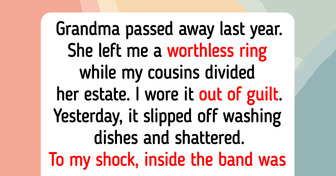13 Quiet Acts of Kindness That Turned Ordinary People Into Superhumans

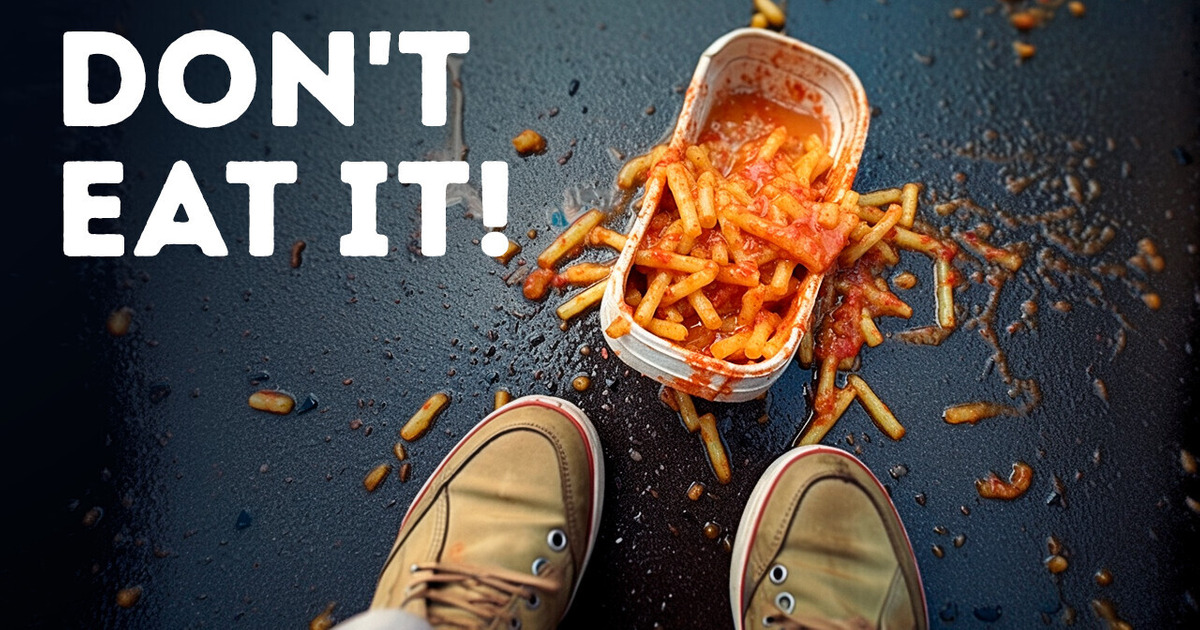
It’s lunchtime! You choose a delicious-looking piece of chicken, but, oh no, it ends up on the floor instead of your mouth. You quickly pick it up and eat it anyway. Because there is the five-second rule, you know. The bad bacteria simply won’t have enough time to hop on your food off the floor if you’re fast enough. But is it real, or is it just an urban legend?

Some folks like to credit the famous Genghis Khan, the founder and ruler of the Mongol Empire, for the whole thing. According to the tale, if food fell on the floor at banquets, it was fair game as long as Khan said so. His food was supposedly so special that it was good for anyone, no matter where it landed. Back in the day, people didn’t know much about those pesky microorganisms and how they could make us sick. So, eating dropped food wasn’t really considered taboo. They figured if they wiped off the visible dirt, it was good to go, and that’s how the Khan Rule came to be. Hey, maybe they just had outstanding immune systems...
Meanwhile, let’s fast forward to the queen of culinary TV herself — Julia Child! As she whipped up mouthwatering meals on her show, The French Chef, some viewers claimed they saw her drop lamb, chicken, or even a turkey on the floor. But in reality, it was a potato pancake that landed on the stovetop, not the floor! In the spirit of having some fun in the kitchen, Julia famously said, “But you can always pick it up, and if you are alone in the kitchen, who is going to see?” And just like that, the misremembered story became part of popular culture.
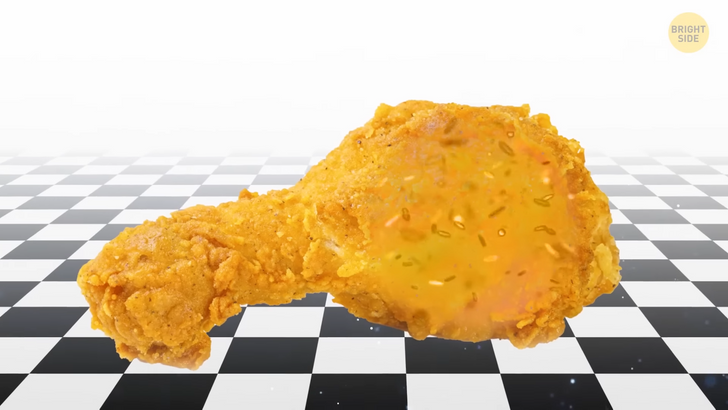
In real life, when your food hits the floor, it’s like a bacteria magnet. That chicken piece is bound to pick up some unwanted microbial hitchhikers. You can’t just give your fallen lunch a quick sanitizing session like you would with your hands. As for the five-second rule, it’s not all so simple. Some foods may have a better chance of survival after taking a tumble. Researchers from Rutgers University discovered that moisture, surface type, and contact time all play a role in the degree of cross-contamination. Foods with high moisture levels, like juicy watermelon, are the biggest culprits for contamination. That means they attract more bacteria than any other food tested. And, not all environments and surfaces are created equal. The carpet had a low transfer rate in the experiment. Stainless steel and wood had higher transfer rates.
In a different study, researchers swabbed the floors around the University of Illinois in the lab, hall, dormitory, and cafeteria to see how many organisms they could find. They were surprised to see very few microorganisms. It was probably because most malicious bacteria like salmonella, listeria, or E. coli can’t survive without moisture, and the floors were all dry. But even on dry, sterile surfaces, germs relocated onto cookies and gummi bears in less than five seconds. For some foods, it takes less than one second for the transfer to begin. So, the five-second rule doesn’t really rule, after all.

It’s more of an urban legend and a psychological trick your mind plays on you. Experimental psychologists explain that when it comes to decision-making, we humans don’t always go through a rigorous risk-benefit analysis. Nope, we rely on our brain’s trusty sidekicks called heuristics. These little shortcuts help us make lightning-fast decisions based on whatever info we’ve got at hand. Sometimes these shortcuts can lead us in the wrong direction though, like in the case of germs. Those are invisible little troublemakers, and food is real and valuable. So, when you drop a precious piece of food on the floor, say, a yellow peanut M&M, your brain goes like: hey, I can’t see any germs, so it must be safe to snatch it up.
Not every floor snack will make you sick, but it also depends on you. Our immune systems, especially in the very young and the very old, can be a bit more fragile and vulnerable. So, it’s crucial not to pass on this questionable habit to the little ones. Remember, they’re always watching.
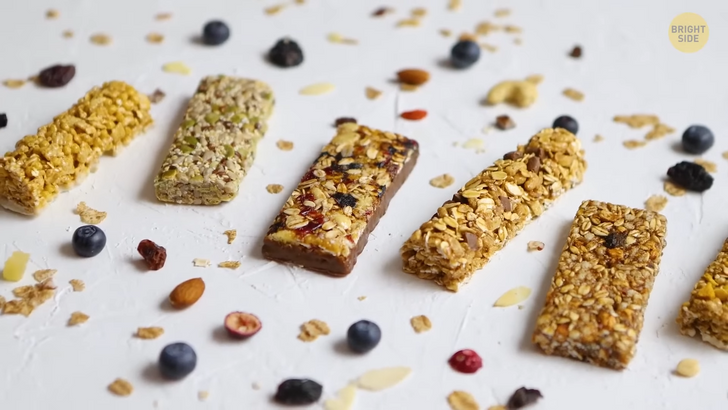
Another popular food-related myth is that carbs are always bad for you. In reality, some carbs are pretty important because they’re converted into fuel for our bodies. You can find those complex carbs, as they’re called, in plant-based foods. They’re the ones that keep our digestive system happy and our metabolism in check. The real villains are the simple carbs. Manufacturers add them to processed foods as starches and sugars. When we gobble them up, they quickly turn into blood sugar, causing all sorts of havoc. Think of sudden spikes, feeling hungry again in no time, and some more serious consequences for your health.
The good carbs come packed with nutritional goodness like fiber and bran, which make them digest slower and release glucose gradually. To make smarter carb choices, try going for whole-grain bread alternatives and swap soda for sparkling water. You can also try the Plate Method. Fill half your plate with fiber-rich, starch-free veggies. Reserve a quarter for starchy delights like potatoes or a fruity treat. And the last quarter is for proteins. Fish, poultry, beans, nuts, eggs, and lentils should become your new dietary besties.
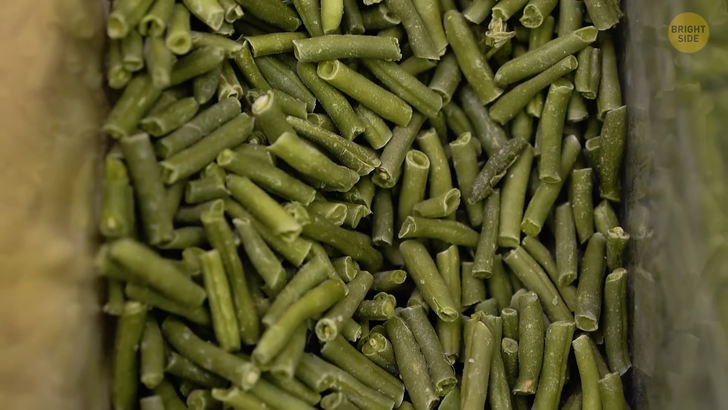
Now frozen or canned fruits and veggies aren’t useless like the rumor has it. Studies have shown that frozen, dried, juiced, or canned plant-based foods can be just as nutritious as their fresh counterparts. You just need to keep an eye out for any sneaky added ingredients like sugars, saturated fats, or sodium. High temperatures during the canning process can cause some vitamins, like C and B, to take a hit. But those vitamins can be a bit sensitive to heat and air in general, so they might leave even during regular cooking and storage at home. Some canned foods, like tomatoes and corn, actually release more antioxidants when they’re heated up.
Have you ever tried adding celery to your diet just because eating it is supposed to burn more calories than you take in? Experts say that negative-calorie foods are nothing more than a fantastical idea. Sure, the process of munching and digesting celery burns a few calories, but not a significant amount. There may be around ten calories in a hefty celery stick, but the body only uses one-fifth of that to process it. So, it’s still a calorie-plus situation. Plus, you’ll unlikely survive just on celery, and it’s often a gateway to more yummy foods like cream cheese or peanut butter. Hey, tell me about it. Meanwhile, high-fiber, water-dense fruits and veggies like celery can indeed have value as weight-loss allies. They fill up your stomach and increase satiety, preventing you from gorging on more calories later. But they won’t magically burn off the calories you’ve already consumed.

Some folks claim that certain foods or beverages make your body work harder. For example, your body needs to warm up cold water to a toasty 98 degrees Fahrenheit. However, there’s no solid research to support the idea that cold water drinkers burn significantly more calories. Maybe a measly five calories, if you’re lucky. Caffeine, guanine, taurine, and green tea extracts have been touted for their metabolism-boosting properties. But again, we’re talking about a tiny boost that could potentially result in losing around 10 pounds over a year. So, looks like the best way to keep your calories under control is to consume fewer of them than you burn through exercise, not just digestion.
Carbonated water isn’t any worse than its still version. When carbon dioxide and water get together, they chemically react to create a weak acid called carbonic acid. It tickles the same nerve receptors in your mouth as mustard. That’s why you get that delightful and prickly sensation. Although carbonated water is a bit acidic, drinking it won’t make your entire body acidic. Your kidneys and lungs step in to remove any excess carbon dioxide from your system. And it’s not terrible for your tooth enamel. One study found that sparkling mineral water had only a slight impact on enamel compared to still water. It was a whopping 100 times less damaging than a sugary soft drink! So keep your bubbly drink sugar-free, and you should be safe and healthy.


